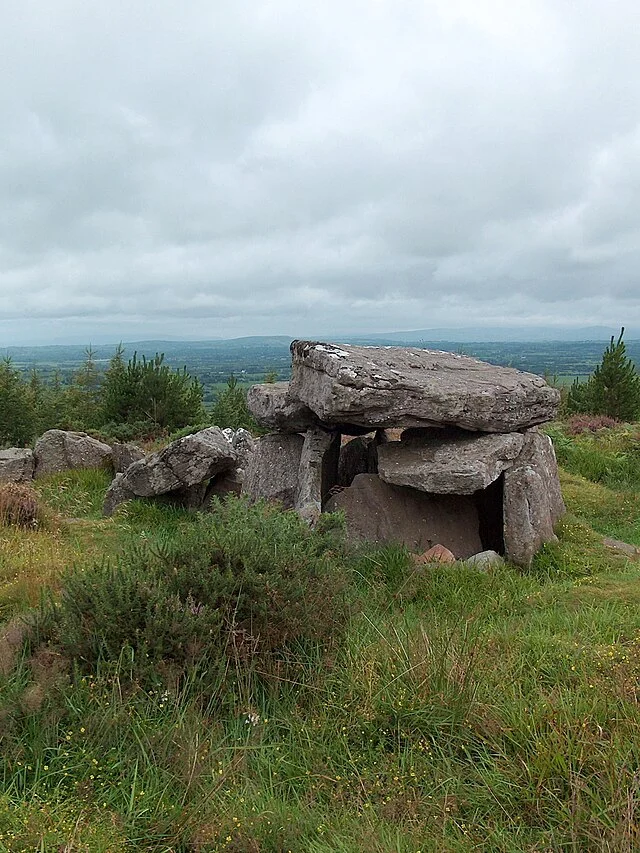The Duntryleague Passage Tomb is a prehistoric burial monument located in County Limerick, Ireland. It is an important example of Neolithic burial practices in the region. Archaeologists classify it as a passage tomb due to its structural design and layout.
Get your dose of History via Email
Location and Context
The tomb sits on the summit of Duntryleague Hill, offering a strategic vantage point over the surrounding landscape. This location likely held ceremonial or ritual significance. Passage tombs are typically part of a broader cultural phenomenon associated with Neolithic Ireland, which includes other notable sites like Newgrange and Carrowmore.
Structural Features
The Duntryleague Passage Tomb consists of a circular mound with a stone-lined passage leading to a central chamber. The chamber was likely used for communal burials, a common practice in the Neolithic period. Large stones, known as orthostats, line the passage, while a capstone covers the central chamber. These structural elements emphasize the tomb builders’ advanced understanding of engineering and construction.
The tomb’s design aligns with other passage tombs, which often incorporate alignments with astronomical events. Although researchers have not fully confirmed such alignments at Duntryleague, its elevated position suggests a deliberate choice to connect the tomb with the heavens.
Cultural and Historical Significance
Archaeologists date the construction of Duntryleague Passage Tomb to around 3500 BC. This period marked significant societal changes, including the transition to agriculture and the establishment of permanent settlements. Passage tombs like Duntryleague reflect the increasing social complexity of Neolithic communities.
The communal burial practices evident at the tomb suggest a shared belief system. Such tombs likely served as ritual centers and symbols of group identity. They also demonstrated the community’s ability to mobilize labor and resources for large-scale construction.
Preservation and Modern Study
Duntryleague Passage Tomb remains in relatively good condition, though time and environmental factors have caused some wear. Efforts to preserve the site focus on preventing further erosion and ensuring public access does not damage its integrity.
Archaeological studies of the site provide insights into Neolithic life in Ireland. Researchers continue to analyze the tomb’s construction, use, and cultural significance. Advanced techniques like ground-penetrating radar have improved our understanding of its layout without invasive excavation.
Conclusion
The Duntryleague Passage Tomb offers a valuable window into Ireland’s Neolithic past. Its design, cultural importance, and connection to broader prehistoric traditions highlight the ingenuity and beliefs of early farming communities. Continued research and preservation efforts ensure the tomb remains a vital part of Ireland’s archaeological heritage.
Source:

